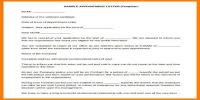Companies use market demand analysis to realize how much customer demand exists for a product or service. This study helps management find out if they can effectively enter a market and produce adequate profits to go forward their business operations.
The key steps in the market and demand analysis: The key steps involved in market and demand analysis are depicted below. It is organized into seven sections as follows:-
Situational analysis and specification of objectives: In order to get a “feel” of the relationship between the product and its market, the project analyst may informally talk to customers, competitors, middleman, and others in the industry. Whenever possible, he may look at the experience of the company to learn about the preferences and purchasing power of customer, actions, and strategies of competitors and practices of the middlemen.
Collection of Secondary information: In order to answer the questions listed while delineating the objectives of the market study, information may be obtained from the secondary source and primary source. Secondary information that has been gathered in some other context and is already available, census, national survey plan report, economic survey etc are the source of secondary information.
Conduct of market survey: For getting primary and secondary information market survey is needed to be done the market survey may be a census survey or a sample survey. In a census survey entire population is covered. On the other hand in a simple survey, a sample of the population is contracted or observed.
Characterization of the market: Based on the information gathered from secondary sources and through the market survey, the market for the product or service may be described in terms of the following –
- Effective demand in the past and present;
- Breakdown of demand,
- Price,
- Methods of distribution and sales promotion;
- Consumers;
- Supply and competition;
- Government policy.
Demand forecasting: After gathering information about various aspects of the market and demand from primary and secondary sources, an attempt may be made to estimate future demand. A wide manage of forecasting methods is available to the market analyst.
Uncertainties in demand forecasting: Demand forecasts are subject to error and uncertainty which arise from three principal sources:-
- Data about past and present market;
- Methods of forecasting;
- Environmental change.
Market planning: A market planning usually has the following components.
- Current marketing situation;
- Opportunity and issue analysis;
- Objective;
- Marketing strategy;
- Action programmed.















